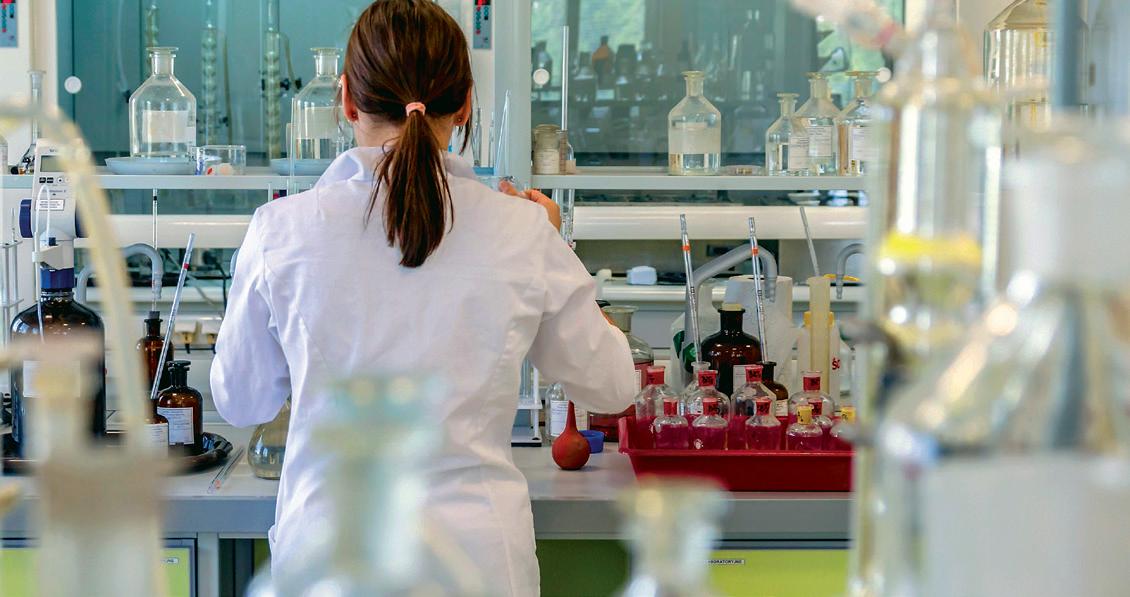
4 minute read
University of Memphis request funding for new STEM building to fulfill growing graduate rates
By Jessica B. Mason
Careers in science, technology, engineering and math (STEM) are at the core of the skills gap in the U.S. Employers lack qualified candidates to fill high-paying roles, resulting in unfilled positions and opportunity gaps.
Advertisement
The U.S. Bureau of Labor Statistics (BLS) projects significant employment growth for engineers, with nearly 140,000 new jobs created over the 2016–26 decade. Further, within engineering, several specialties are projected to grow even faster than the 4% growth rate for engineers or the 6.5% growth rate for all occupations by 2024: biomedical engineers (23.1%), environmental engineers (12.4%) and civil engineers (8.4%).
In fact, the House Science Committee held a hearing earlier in 2019 to discuss STEM workforce needs. They stressed that the U.S. must “better develop domestic talent and continue to welcome students and researchers from abroad to ensure the future sufficiency of its STEM workforce.”

In Tennessee specifically, it is anticipated that more than 100,000 STEM-related jobs will need to be filled within the next six years, and 88% of those jobs will require post-secondary education.
The University of Memphis Herff College of Engineering has specific initiatives in place to increase the number of STEM graduates it produces who are highly needed in the workforce. In its 10-year strategic plan, spanning from 2013-2023, the College of Engineering’s goal is to double the number of B.S. degrees conferred. The college’s target includes awarding 235 B.S. degrees per year, doubling production of master’s degrees to 80 per year and increasing doctoral degrees by 150% to 25 per year.
The Herff College of Engineering at the University of Memphis is growing exponentially and is on track to achieve its 10-year strategic goals. In the past five years alone, the college has increased overall enrollment by 30%, and the number of B.S. degrees in its department has increased by 50%. Meanwhile, overall undergraduate enrollment has increased by 37%, and first-time freshman enrollment has increased by 137%.
“The UofM is committed to increasing degree production in the Herff College of Engineering,” Rick Sweigard, Dean, Herff College of Engineering at the UofM, said. “As a university, we realize the importance of a STEM education and work diligently to prepare our students to excel in these positions that are in high demand in the workforce.”
- Dr. M. David Rudd President and Distinguished University Professor University of Memphis
“The Herff College of Engineering is growing at unprecedented rates, which is a testament to our ongoing commitment to award increasing numbers of engineering degrees,” Mark Askew, PE, Founder-Principal, A2H Engineers, Architects, Planners, and Chair, Herff College of Engineering Advisory Council, said.
The University’s master plan, created using 2013 enrollment data, reported that the Herff College of Engineering was at a 31,896 square foot space deficit, the largest deficit for any UofM college. Now, with an enrollment increase of 30%, there is even less space for more students and faculty.
“While we are thrilled to see this kind of growth and excitement in our college, the more students, faculty and researchers we have, the more we are in need of additional space, specifically for research activities, in order to meet and exceed the needs of the college and the community we serve,” Sweigard said.
The UofM is also undergoing a rigorous process to achieve Carnegie R1 status, and as part of the five-year plan to reach R1 status, the university is seeking funding for a new STEM building. The UofM submitted a proposal to receive funding from the state in its next budget cycle, which will be decided upon in January. The college also has aggressive plans to greatly increase annual research expenditures.
“To become and remain an R1 research university, the University of Memphis seeks $32.9 million to build a STEM Research and Classroom Building and a $5 million recurring appropriation for research,” Dr. M. David Rudd President and Distinguished University Professor, said in a statement to Governor Lee.

“We are in need of additional space in order to alleviate the space deficit, enhance interdisciplinary interaction, advance student-focused STEM education, increase flow through the STEM pipeline and promote economic advancement for individuals and the region,” Ted Townsend, UofM chief economic development and government relations officer, said.
With a strategic plan in place, the Herff College of Engineering is working to address STEM workforce needs and is on target to achieve its 10-year goals for degrees conferred. A new STEM building will not only alleviate the space and resource needs of students and faculty, but it will also help push the UofM closer to achieving the distinguished Carnegie R1 research designation.
“While there has been a recent lack of state investment in higher education capital projects in West Tennessee, we are hopeful that Governor Lee will acknowledge the need for a new STEM building and budget accordingly for the UofM to continue to address student enrollment growth together with STEM workforce needs,” Sweigard said.




